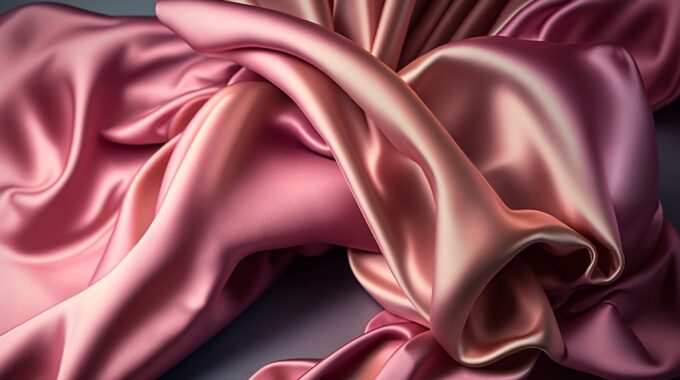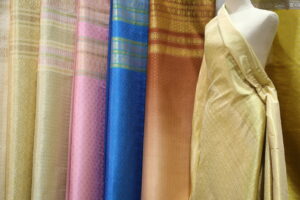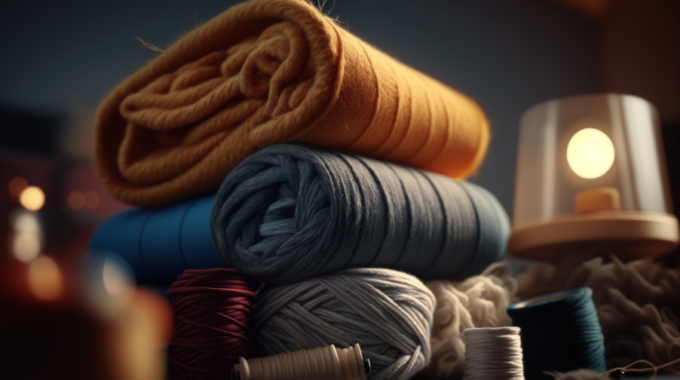In a world where safety is paramount, protective coveralls stand as the guardians against potential…

Exploring the timeless elegance of silk
In the realm of fabrics, there exists one that reigns supreme in terms of elegance, allure, and sheer luxury: silk. With a history woven into the tapestry of ancient civilizations, silk stands as a testament to exquisite craftsmanship and timeless beauty.
Its soft touch and shimmering appearance have captivated hearts for centuries, draping those who wear it in an air of sophistication. As we embark on this journey into the realm of silk fabric, prepare to be immersed in a world where delicate threads spin tales of opulence, where secrets of production and care are whispered like silk on skin.
All about silk
Silk production has a rich history that dates back more than 5,000 years. It originated in ancient China and was initially kept as a closely guarded secret. The Chinese Empire held a monopoly on silk production for many centuries, which contributed to its high value and trade significance along the Silk Road.
Silk is created by silkworms, which are the larval stage of the silk moth. These silkworms spin a continuous filament made of a protein called fibroin to create their cocoons. The process of harvesting silk involves carefully unraveling these cocoons and then weaving the silk threads into fabric.
Noteworthy characteristics
Stronger Than Steel:
Despite its delicate appearance, silk is incredibly strong. In fact, silk is one of the strongest natural fibers known to man. Pound for pound, silk is said to be stronger than steel. This strength is due to the molecular structure of silk fibers, which makes them highly resistant to breakage.
Natural Temperature Regulator:
Silk fabric has unique thermoregulatory properties, making it suitable for a wide range of climates. Silk is an excellent insulator, keeping you warm in cold weather. However, it also has excellent breathability, allowing air to circulate and keeping you cool in warmer temperatures. This natural temperature regulation makes silk a comfortable fabric to wear year-round.
Silk Absorbs Moisture:
Silk has the ability to absorb moisture while still feeling dry to the touch. It can absorb up to 30% of its weight in moisture without feeling damp, making it an excellent choice for garments that need to wick away perspiration and keep the wearer comfortable.
Silk is Hypoallergenic:
Silk is hypoallergenic, meaning it is less likely to cause allergic reactions compared to other fabrics. It is a natural material that is resistant to mold, mildew, and dust mites, making it a good option for individuals with allergies or sensitive skin.
Silk’s Natural Sheen:
Silk fabric has a unique lustrous quality often referred to as its “natural sheen.” This sheen is a result of the triangular prism-like structure of silk fibers that refract light, giving silk its characteristic shimmering appearance.

Silk is a luxurious and delicate fabric that requires special care to maintain its beauty and longevity. Washing silk-based clothes can be a daunting task, as any mishandling can result in irreversible damage.
To ensure your silk garments retain their luster and remain in pristine condition, it is essential to avoid certain common mistakes. If you’re wondering how to wash silk clothes, you’re at the right place.
In this blog, we will discuss the key mistakes to steer clear of while washing silk-based clothes, allowing you to enjoy their elegance for years to come.
Neglecting the Label Instructions
One of the gravest mistakes many people make is disregarding the care instructions on the garment label. Each silk piece may have specific recommendations regarding temperature, washing method (hand or machine), and any special treatments required. Always take the time to read and follow these guidelines carefully.
Using Harsh Detergents or Bleach
Silk is a delicate fabric that is easily damaged by harsh chemicals. Avoid using regular laundry detergents or bleach, as they can strip away the natural luster and weaken the fibers. Instead, opt for mild, pH-neutral detergents specially formulated for silk or delicate fabrics.
Skipping Pre-Treatment
Pre-treating stains before washing is crucial for maintaining the integrity of your silk garments. Many people make the mistake of directly tossing stained silk into the washing machine. Instead, take the time to treat stains individually using a specialized stain remover or a mild detergent. Apply the treatment gently, following the instructions provided, and allow it to penetrate the stain before washing. This precautionary step will increase the likelihood of stain removal and protect the silk fibers.
Taking care of silk-based clothes requires patience and attention to detail. By avoiding the aforementioned mistakes, you can ensure your silk garments retain their elegance and charm for years to come. Always adhere to the care instructions provided.
Follow us on LinkedIn for more content.



